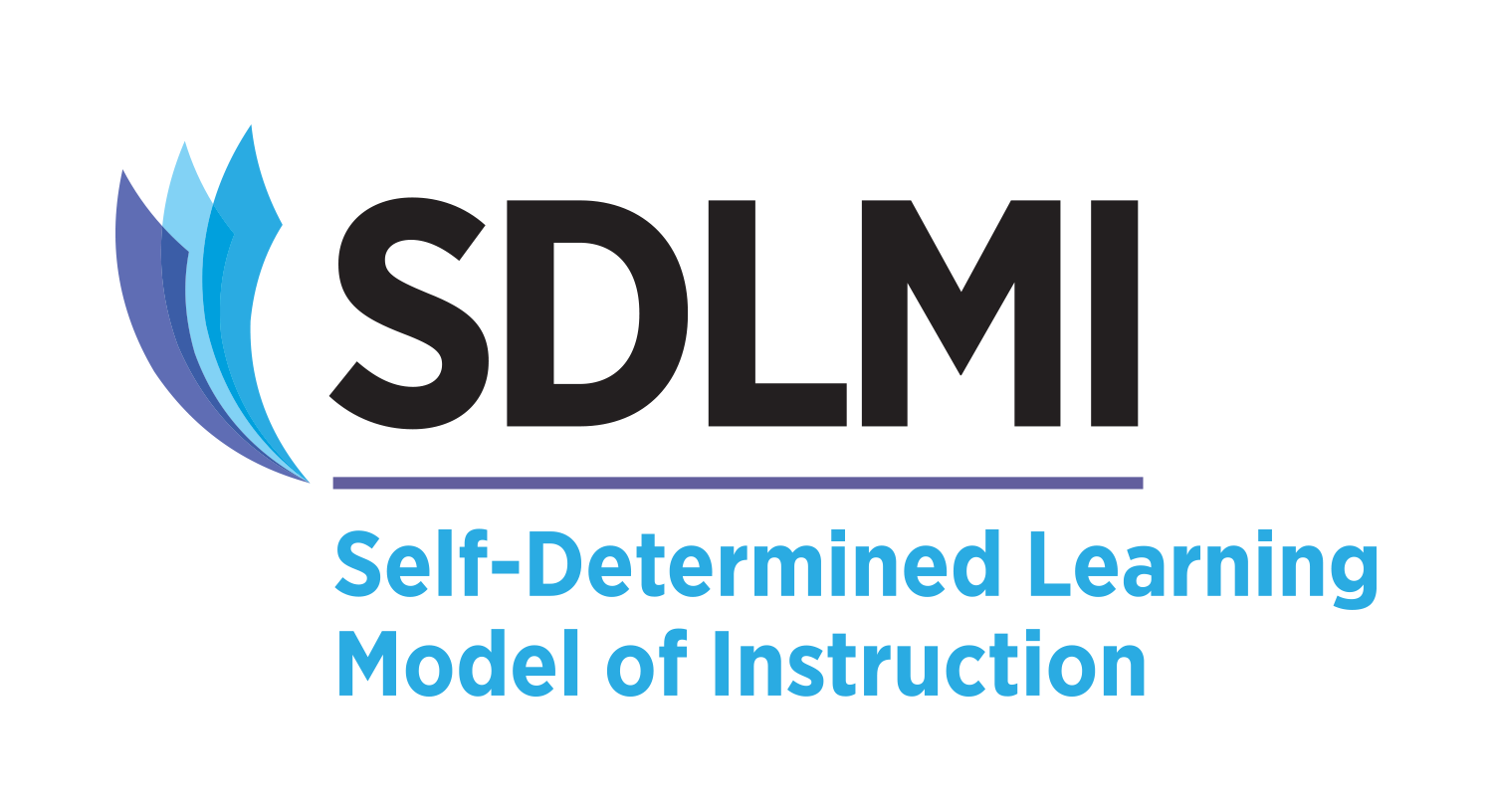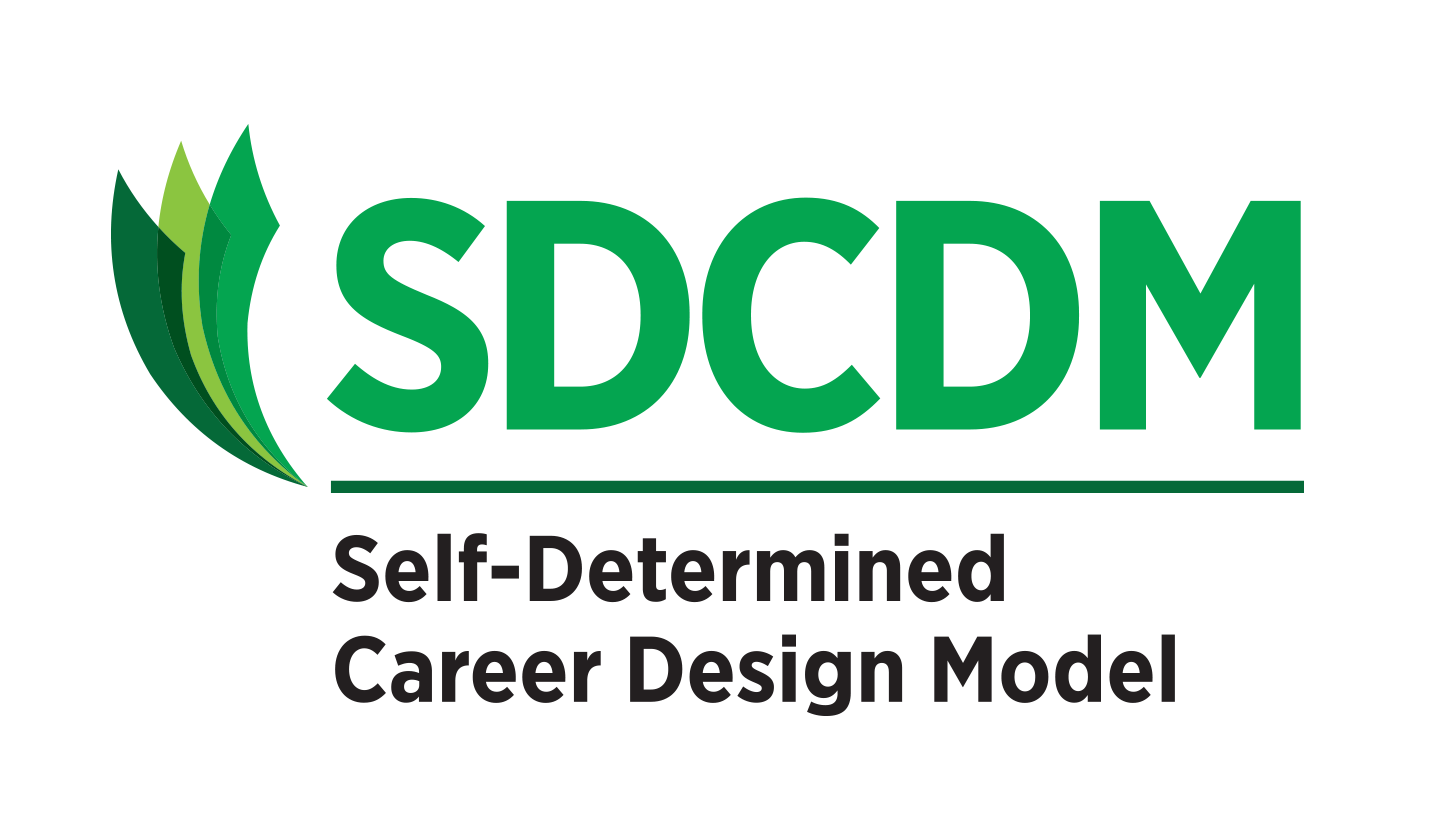
The Self-Determined Learning Model of Instruction (SDLMI) is an instructional model that can be used in schools and communities to support people to self-direct and self-regulate their actions in pursuit of goals.
The SDLMI has three core components:
- Student/Person Questions
- Teacher/Facilitator Objectives
- Educational Supports.
The SDLMI is delivered through facilitated lessons/sessions in which people learn steps to set a goal, create an action plan for attaining their goal, and monitor and adjust their goal or plan based on what they learned as they go through the SDLMI process.
Self-determination is about making or causing things to happen in your life.
Self-determined people act as causal agents as they set and go after their goals.
The SDLMI can be implemented by any trained person (e.g., educators, community service providers, self-advocates, mentors) to support anyone with or without disabilities to use the SDLMI process to set and go after their goals.
The SDLMI can be delivered in a variety of settings, including school and community settings. When delivered in schools, the SDLMI can be used in any academic (e.g., English, Math) or non-academic (e.g., study skills class, transition planning) class and overlaid on any existing curriculum (e.g., Science, Art, transition or Individualized Education Program [IEP] planning). The SDLMI can also be used to guide planning for employment and community engagement activities in small groups of through 1:1 approaches virtually and in the community. Training prepares implementers to use the SDLMI and complete the associated activities with people based on their settings and the strengths and areas for growth of the people they are working with.
The frequency and duration of the SDLMI will vary based upon the setting and people’s support needs. Sessions could last anywhere from 10-15 minutes in inclusive general education settings to 30-45 minutes during transition planning, to 1-2 hours in the community with groups of people learning together. While implementers create individualized implementation schedules to guide delivery of the SDLMI, we suggest in schools that implementers support students to engage in SDLMI lessons twice per week and weekly in community-based sessions.
The SDLMI is an evidence-based practice that can be used by trained facilitators to enhance their supports for people as they grow in their self-determination. The SDLMI is designed to guide trained implementers as they support people to self-select goals and develop skills associated with self-determination (e.g., problem solving, decision making, self-evaluating, self-advocating). The SDLMI supports people with opportunities to learn a process they can use over time to identify and go after goals that matter to them, learning about and refining their understanding and use of self-determination skills and abilities.
As people use the SDLMI they grow in their motivation. They also learn about themselves and how to go after goals. The SDLMI is a cyclical process that can be used repeatedly to support people as they identify new and different goals. This leads to enhanced academic achievement, social-emotional development, employment, community engagement, and quality of life outcomes.
SDLMI materials include an implementer guide, accompanying lesson/session plans, PowerPoint instructional slidedecks, and student/person reflection activities in the SDLMI Activity Booklet. All SDLMI training materials include case studies and examples relevant to implementing the SDLMI with all learners (e.g., SDLMI materials used in school-based settings focus on student examples and SDLMI Community materials share examples rooted in non-school settings).

The Self-Determined Career Design Model (SDCDM) is a career-focused version of the Self-Determined Learning Model of Instruction (SDLMI) that can be used to support people to self-direct and self-regulate their actions in pursuit of their career related goals. The SDCDM is similarly structured to the SDLMI to solve the overall problem of designing a career.
Self-determination is about making or causing things to happen in your life.
Self-determined people act as causal agents as they set and go after their goals.
The SDCDM can be used by a variety of trained facilitators, from self-advocates to community service providers to career counselors or teachers, for anyone who wants to design their career trajectory.
The SDCDM can be delivered anywhere where an individual and a possible facilitator interact with each other. This can be at school, at home, in the community or online!
Facilitators create regular (at least weekly) opportunities for individuals to learn and practice the SDCDM. It takes about three months to work through the SDCDM and people can work through it repeatedly with support!
Designing a career pathway is critical for success. The SDCDM supports people across the life course to set goals for what they want their career to be and build systems that support them to achieve their goals
SDCDM materials include guides for implementing, plain-language session planners, session PowerPoints, tools for supporting people with disabilities to implement, and a range of activities linked to career pathways.

